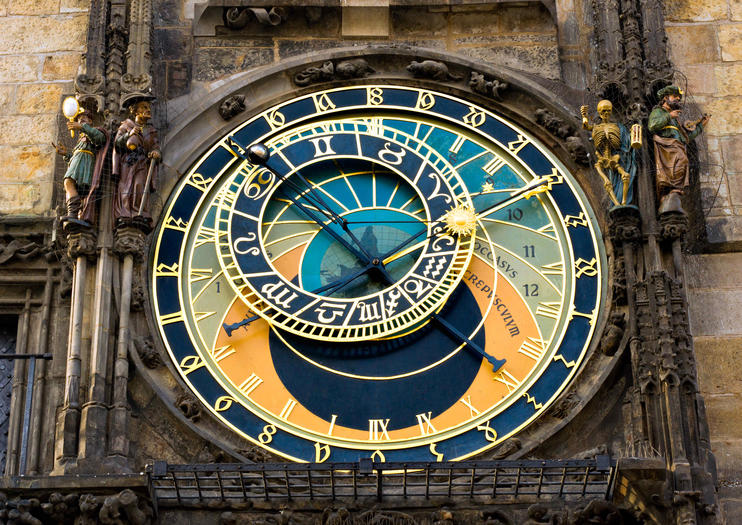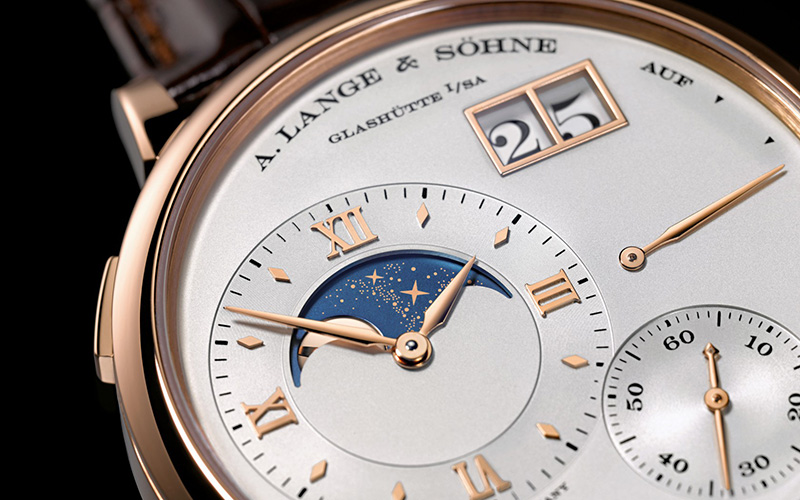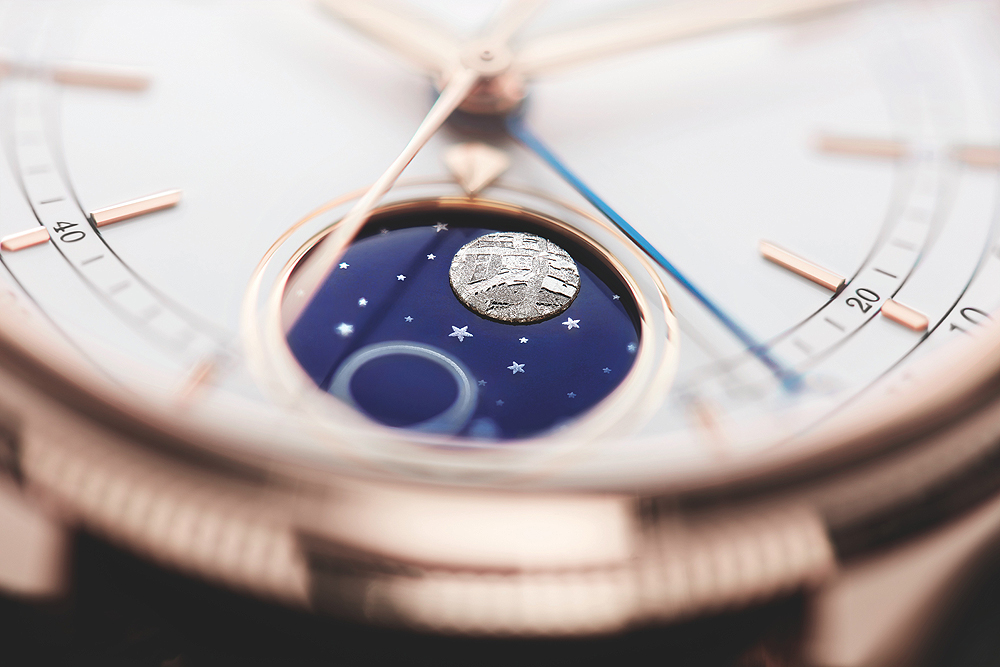Moon Phase Watches

Time immemorial has borne witness to the sun’s rays reflecting off the surface of Earth’s moon. Our ancient ancestors utilized these candescent lunar visions to determine days, months, and years. From there, human invention and perseverance brought us to simple convenient machines that could bring the moon down to our terrestrial realm—mapped and transmitted via industrious mechanisms and radio-controlled signals. But what of these maps and visions in timekeeping? Well, the longest operating astronomical clock was installed in Prague in the year 1410. Being the third oldest of its kind, this Orloj still stands as an indication of medieval trends toward tracking extraterrestrial cycles. However, considering that early understanding of the universe included Earth at the center—these old time trackers were pretty problematic. So onward, our best and brightest continued to make new discoveries. Through continued invention these discoveries have been employed by an array of time oriented devices—a tradition that has not ceased to this day (after all, it’s pretty hard to ignore our closest celestial neighbors). In terms of moon phases, the first personal watches began integrating them into their displays in the late 19th century. Modern wristwatches, as well, continue to capture and illustrate these lunar movements. But why worry about these phases now? How do these watch mechanisms actually work? Ahead we’ll briefly explore these questions, in hopes of illuminating the function and utility of moon phase dials.
Phases,
Function, and Setting the Dial
As it stands, most timepieces run a 59 tooth gear that advances the moon dial one notch every 24 hours. Some high end brands have more complicated gears with 1-200 teeth that require less calibration. The moon phase itself, in terms of mechanical pieces, is difficult to make accurate because it does not follow the easier to exact (fractions of 60) sexagesimal numbers of seconds, minutes, and hours. Thus, the lunar month is shorter than a daily month, and requires recalibration about every 2.5 years. As a matter of course, it takes roughly 29-and-a-half days for a new-moon to cycle back to itself. Furthermore, the full body of the moon goes around the earth around every 27 days, relative to the position of the stars in the sky. In additional context, the moon is not rotating on its own—it is tidally locked—meaning only one side faces us directly at all times. Spatially, the moon moves around the Earth at an inclined angle—which is why the moon phase takes a bit longer than the actual rotation of the moon’s body around Earth’s full form. Gravity works at the speed of light, but the mentioned angle of the moon makes the Sun’s rays reveal segments of the moon more slowly than its rotations around our galactic home.

Currently most moon phase wristwatches operate on day/date movements. So bi-annual calibration can be a bit tricky. For some aid in setting them—whether you are a new or veteran owner of a moon phase wristwatch—here are some quick steps on setting a moon phase dial:
- Adjust the moon image to the height of the full moon, by pulling your stem out two stops—via the crown—and rotating the crown/hands clockwise.
- Set any date on the dial to the last known date of the full moon [this may require some online research. The dates are typically set by moving the stem out one step, and rotating the crown clockwise—though Mon.-Sun. settings will require movement of the time hands forward].
- After aligning the gears to the last full moon with the above steps, move the time and date forward to the current numerical date. This may take a bit of extended manual labor, but will keep your gears aligned correctly.
- Set any additional date on the first step of the crown, this will typically only affect one dial.
- Week of the year hand: Some watches will display the week of the year as well. This will be illustrated by a fourth hand which aligns with notches on the dial. Typically there will be a separate button/presser to adjust this hand. If this is not true, it’s important to reference any model-specific literature on setting the moon phase. The week of the year notches will be listed up to the number 52, since there are a little over 52 weeks in a year.
The above
instructions are going to work well, generally, but any literature on your
timepiece should be referenced carefully. And if any other questions arise, you
can always contact a watchmaker—or the manufacturer of your piece.
Legacy

Many modern applications of this style of watch relate to the Earth’s tides—since the moon affects them all year round. These applications include naval navigation and oceanic fishing for both private and commercial purposes. Aside from these practical applications, moon phase dials are small testimonials to the more astronomical aspects of timekeeping’s history. So, whether you’re admiring an old-world clock, have a collectible pocket watch, or even a modern piece, you are taking part in an ancient endeavor. In our digital age, these phases can also be traced by digital timepieces, which will be the most futuristic mode of moon phase tracking on wristwatches—until the next great horological invention moves this tradition forward.
Times Ticking has been in operation for more than 30 years, since 1982. We have performed watch repair for customers both locally and internationally. If it Ticks! We KNOW it! Our team of watch repair technicians have a combined experience in watchmaking of over 120 years.

